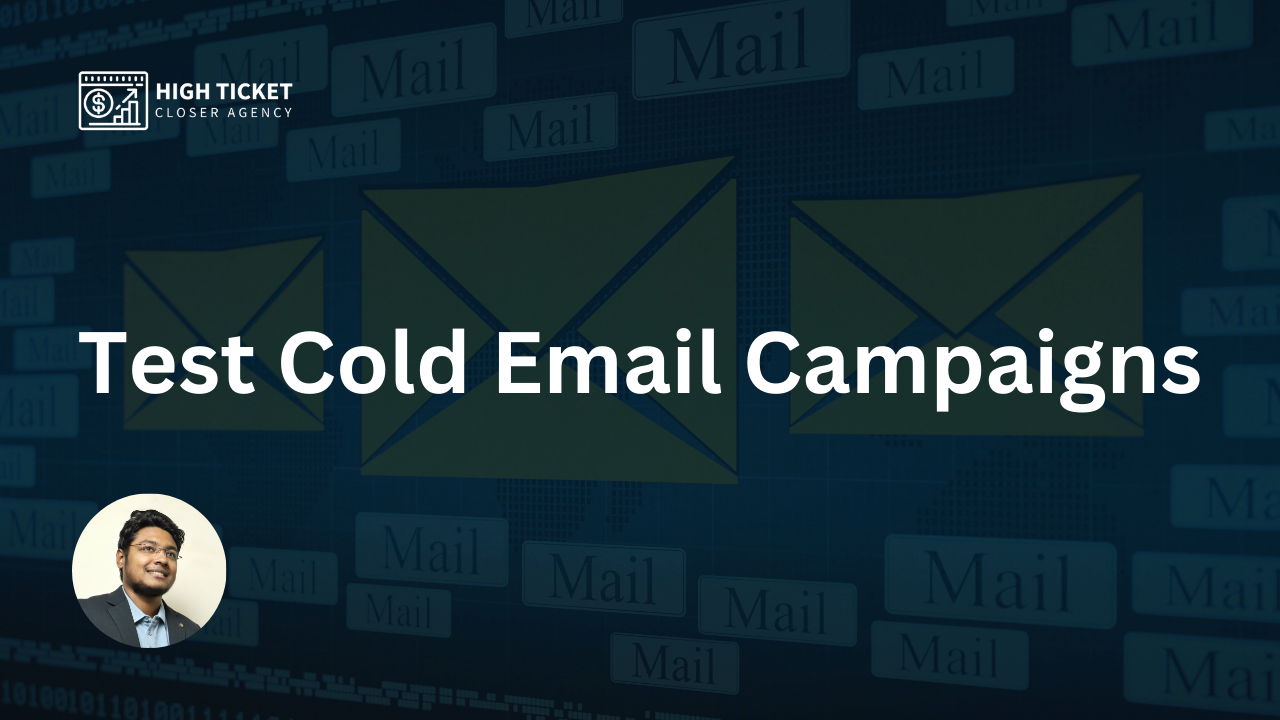I’m Tangeer Mehedi, a cold email specialist. Clients often crave quick results, but they overlook the intricacies of a successful campaign.
In this article, I’ll show you how to test and find winning cold email strategies for long-term success. Let’s get started!
Please Note: To kickstart your cold email strategy effectively, it’s crucial to choose a specific niche while targeting a broad audience. Narrowing your focus too much may not yield the best results in cold emailing.
Step 1: Preparing Your Cold Email Infrastructure
Before you begin testing your campaigns, you need to set up your cold email infrastructure. Here’s what you’ll need:
- Domains: Start with at least 10 domains. These will be crucial for your outreach efforts, as they allow you to rotate email-sending addresses, improving your deliverability.
- Email Accounts: Create a minimum of 2 email accounts for each domain. This gives you a total of 20 email accounts that you can use to send cold emails. Ensure these accounts are warmed up gradually to avoid spam filters.
Step 2: Building Your Initial List
Your goal is to test the waters and find where the demand in the market lies. Instead of narrowing your focus too early, aim to build a broad audience. Here’s how:
- Leads: Start with a list of at least 3,000 leads. Going broad allows you to identify pain points and potential clients more effectively.
Step 3: Creating Variations in Campaigns
To discover which approach works best, create different campaign variations. Diversify your campaigns by targeting various pain points, benefits, and results. Here’s what you can do:
- Campaign Variations: Develop a minimum of 6 different campaigns or campaign variations. Make them as distinct as possible to test various directions.
- Targeting: Ensure each campaign variation targets different pain points or benefits. For instance, one campaign might focus on cost savings, while another emphasizes improved efficiency.
Step 4: Testing and Analyzing Results
Now that your campaigns are set up, it’s time to start testing. Follow these steps to ensure a thorough analysis:
- Distribution: Distribute 500 leads to each campaign variation. This will provide a large enough sample size for accurate results.
- Follow-Ups: Send at least two follow-up emails for each campaign. Following up is crucial for nurturing leads and converting them into clients.
Step 5: Analyzing the Data
As responses start rolling in, it’s time to analyze the data to identify winning strategies:
- Conversion Rate: Determine which campaign variations have the highest conversion rates. This indicates which approaches resonate best with your audience.
- Response Quality: Pay attention to the quality of responses. Are leads more interested in specific pain points or benefits? Use this information to refine your messaging.
- Engagement Metrics: Track open rates, click-through rates, and reply rates. These metrics offer insights into how engaged your audience is with your campaigns.
Step 6: Scaling Up
Once you’ve identified winning campaign variations, it’s time to scale up your efforts. Allocate more resources to the campaigns that yield the best results and refine your messaging accordingly.
By following these steps, you’ll be well on your way to testing cold email campaigns effectively and finding winning strategies for your agency. Remember that success in cold emailing often requires ongoing optimization, so be prepared to adapt and refine your approach as you continue to grow.
Starting an agency and acquiring clients can be challenging, but with a well-executed cold email strategy, you can find the path to long-term success.

I’m Md Tangeer Mehedi, and I’ve been actively engaged in cold emailing for the past three years. My primary focus is appointment setting with B2B clients and helping businesses set up their cold email systems. In this blog, I will share real-life problems I’ve encountered in my work and provide solutions to these challenges. I hope you enjoy reading my blog and find it helpful.


